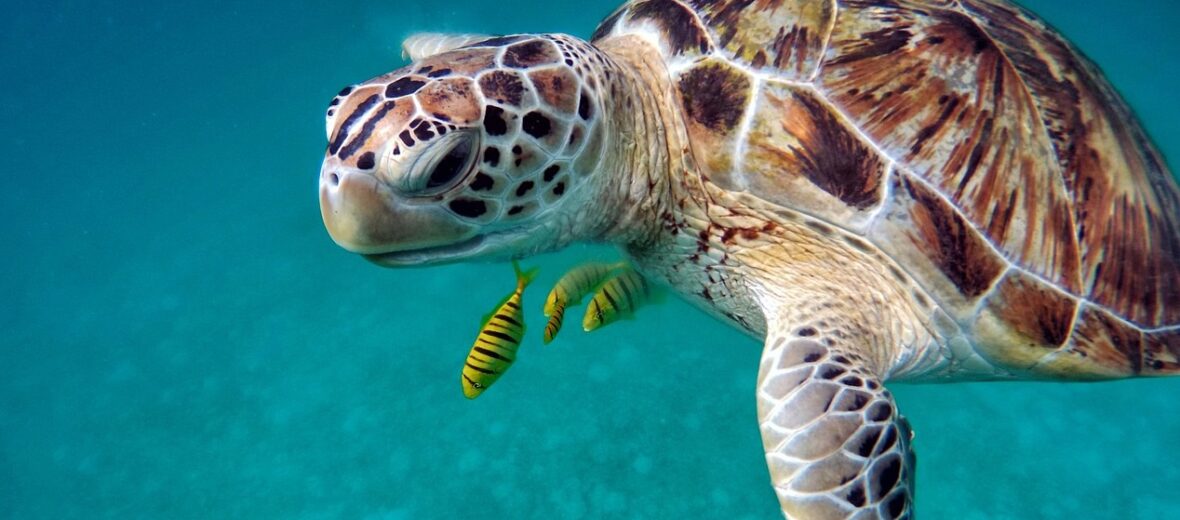
There are only 7 known species of sea turtle existing today and 6 of these are found around Australian waters. They are the green sea turtle, the loggerhead, the olive ridley, the hawksbill, the flatback, and the leatherback turtles. Most sea turtles are found in warmer, tropical ocean waters and thus they are predominantly found in northern Australian waters.
First the Stats…
Scientific name: Chelonioidea
Weight: Up to 1,500 lbs
Length: Up to 9 feet
Lifespan: Up to 80+ years
Now on to the Facts!
1.) Their diet typically consists of jellyfish, seaweed, shrimp, crabs, sponges, snails, algae, and mollusks.
2.) Sea turtles have been around for an estimated 220 million years!
3.) Accidental capture and entanglement in fishing gear (also known as bycatch), the loss of nesting and feeding sites due to coastal development, poaching, ocean pollution, and plastic which has caused a huge deficit to sea turtle populations.
4.) Most of what we know about sea turtle behavior is gathered by observing hatchlings and females that leave the water to lay their eggs. Males, however, never leave the water.
5.) Sea turtles can migrate long distances between their feeding grounds and their mating-nesting sites, with record distances longer than 1,615 miles!
But wait, there’s more on the sea turtle!
6.) They typically just meander through the ocean, but if need be, they can briefly reach speeds of up to 22 mph!
7.) Females travel 1,000s of miles from their feeding grounds back to the beach where they hatched every 2 – 4 years to lay eggs.
Did you know…?
The temperature of the sand surrounding the eggs determines the gender of the turtle: below 85ºF typically means a male; above 85ºF means you’ll get a female. This is the case in other turtle species as well.
8.) After mating in the shallow water offshore, the female crawls onto the beach, digs out a nest with her flippers, lays a clutch of about 100+/- eggs, then she covers the eggs with sand and returns to the sea. The hatchlings are self sufficient and totally on their own. Not much of a motherly nurturing instinct, eh?
9.) After about 2 months, the hatchlings emerge using a special “egg tooth” to break through their shells and leave their eggs. However, when they do, the mad dash is on, and they must quickly make the hazardous journey over the sand to the ocean, avoiding predators like birds, wild dogs, crabs, lizards, and poaching humans along the way!
10.) Once they reach the ocean, their fight isn’t over. Now they have to fend off predatory fish, sharks, and human-based threats, like fishing nets and gear, as well as pollution.
Now a Short Sea Turtle Video!
Also, check out the Critter Science YouTube channel. Videos added frequently!
Want to suggest a critter for me to write about? Let me know here.



